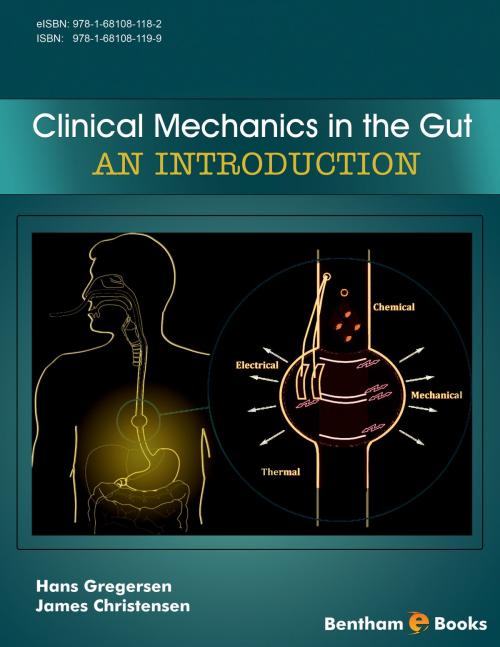| Author: | Hans Gregersen | ISBN: | 9781681081182 |
| Publisher: | Bentham Science Publishers | Publication: | January 24, 2016 |
| Imprint: | Language: | English |
| Author: | Hans Gregersen |
| ISBN: | 9781681081182 |
| Publisher: | Bentham Science Publishers |
| Publication: | January 24, 2016 |
| Imprint: | |
| Language: | English |
The gastrointestinal tract is a series of organs each with distinct mechanical functions. Each organ within the system brings food contents in the gut lumen to the site of absorption through separate mechanical functions. These mechanical functions are generated by a fine-tuned interaction between neuronal networks and active muscle layers. The passive components of the gastrointestinal wall such as the collagen-rich submucosa also play an important role in these mechanical actions. Clinical Mechanics in The Gut provides a thorough understanding of the anatomy and biomechanics of the physiological function and pathophysiology of the gastrointestinal tract. The book first gives an introduction to readers about the physical geometry of the gastrointestinal tract followed by a detailed explanation of biomechanical theory and its application to approximating and modeling gut mechanics. This is expanded further by detailed explanations of gut muscle and motor nerve functions in proceeding chapters. A biomechanical evaluation of disorders of regulatory mechanisms such as achalasia and Hirschsprung disease and disorders of effector mechanisms such as reflux disease, systemic sclerosis of the gastrointestinal tract and colonic diverticular disease are also included. Readers will, therefore, gain an understanding about clinical problems in gastroenterology from a bioengineering and modeling perspective. Clinical Mechanics in The Gut is a useful reference for gastroenterology researchers, biomedical engineers and systems biologists seeking to understand the physiology of the gut and applying this knowledge to surgical procedures, computer-based modeling systems and robotics.
The gastrointestinal tract is a series of organs each with distinct mechanical functions. Each organ within the system brings food contents in the gut lumen to the site of absorption through separate mechanical functions. These mechanical functions are generated by a fine-tuned interaction between neuronal networks and active muscle layers. The passive components of the gastrointestinal wall such as the collagen-rich submucosa also play an important role in these mechanical actions. Clinical Mechanics in The Gut provides a thorough understanding of the anatomy and biomechanics of the physiological function and pathophysiology of the gastrointestinal tract. The book first gives an introduction to readers about the physical geometry of the gastrointestinal tract followed by a detailed explanation of biomechanical theory and its application to approximating and modeling gut mechanics. This is expanded further by detailed explanations of gut muscle and motor nerve functions in proceeding chapters. A biomechanical evaluation of disorders of regulatory mechanisms such as achalasia and Hirschsprung disease and disorders of effector mechanisms such as reflux disease, systemic sclerosis of the gastrointestinal tract and colonic diverticular disease are also included. Readers will, therefore, gain an understanding about clinical problems in gastroenterology from a bioengineering and modeling perspective. Clinical Mechanics in The Gut is a useful reference for gastroenterology researchers, biomedical engineers and systems biologists seeking to understand the physiology of the gut and applying this knowledge to surgical procedures, computer-based modeling systems and robotics.















